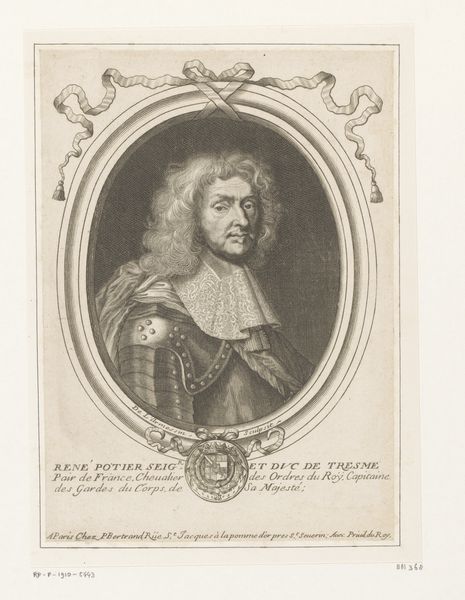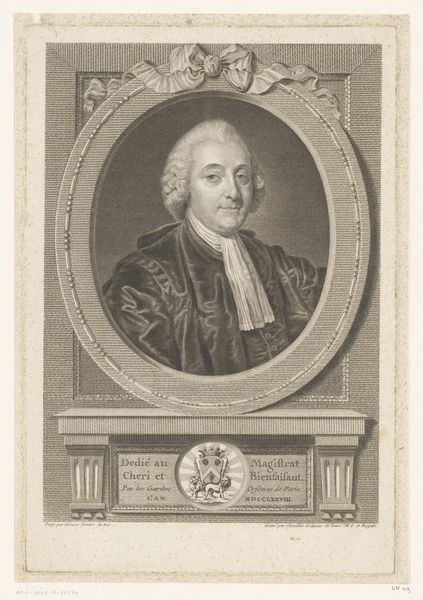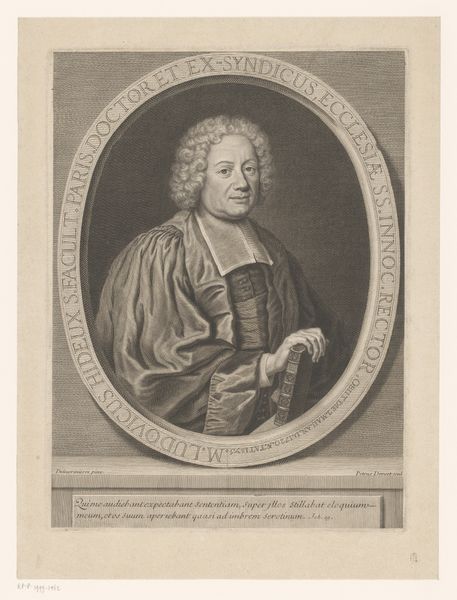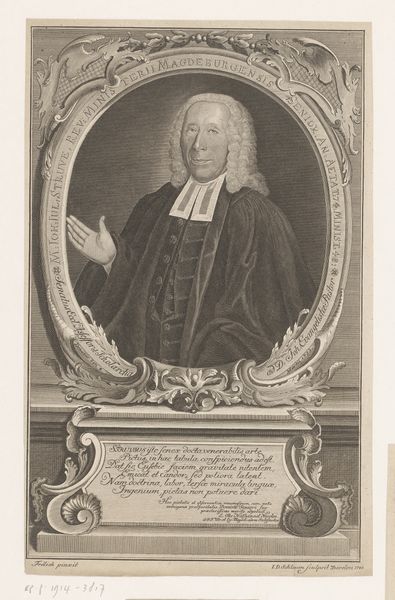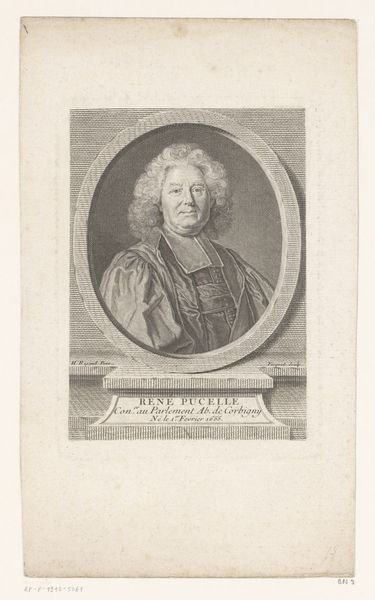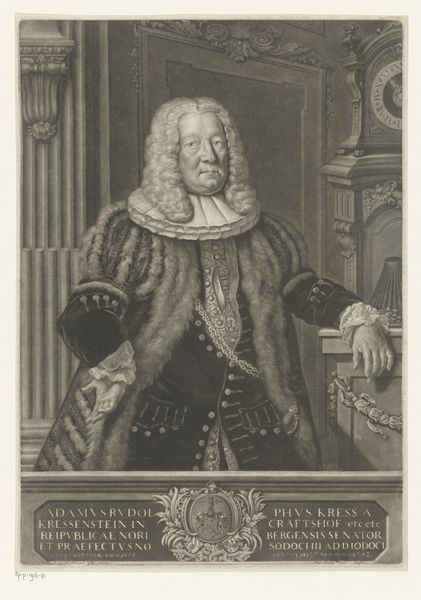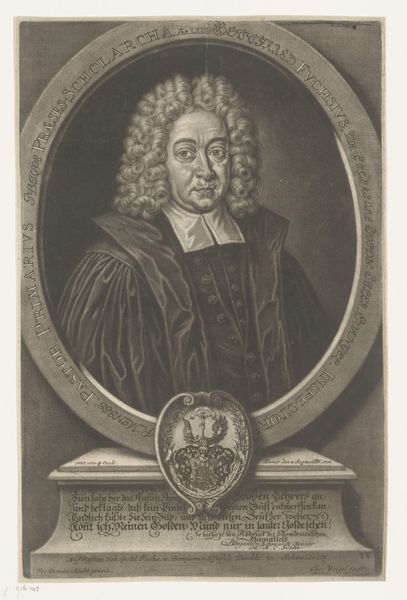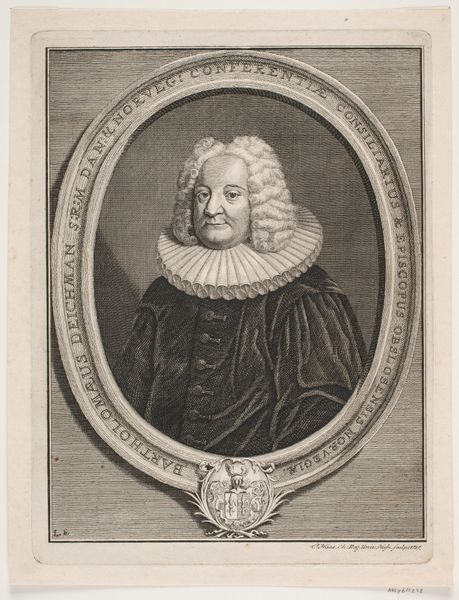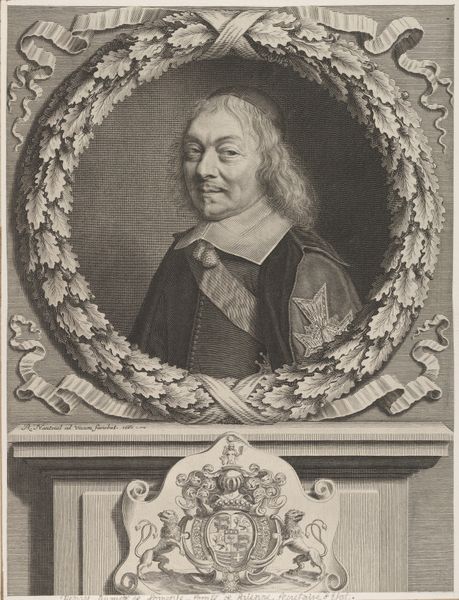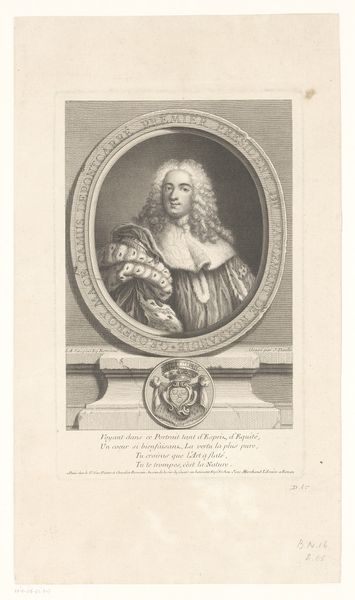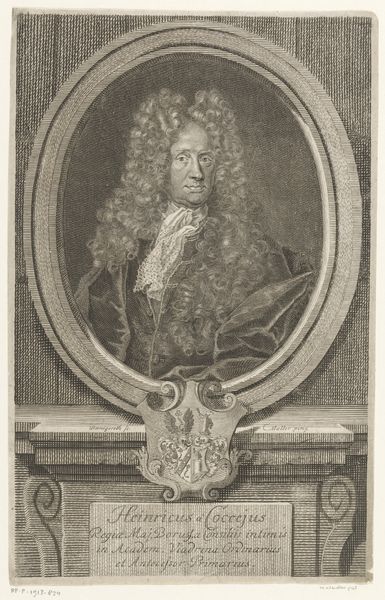
print, ink, engraving
#
portrait
#
baroque
# print
#
old engraving style
#
ink
#
pencil drawing
#
portrait drawing
#
history-painting
#
engraving
Dimensions: height 350 mm, width 240 mm
Copyright: Rijks Museum: Open Domain
Editor: This is a baroque-style portrait print, dating from 1714 to 1737, titled "Portret van Johann Balthasar Gullmann," made with ink and engraving techniques. There is something so official and stately about this portrait; it’s like peering into another world, especially with all the ornamental framing! What can you tell us about its history? Curator: The framing itself gives us a clue. In this period, portraits weren't simply representations, they were actively constructing and solidifying social status. This man, likely a person of importance given the symbols around him and the draped curtain, is presented within a very specific visual language intended for public consumption. Editor: Public consumption how? Was this print widely distributed? Curator: Precisely! Prints like these were often circulated among the educated elite. Notice the text at the bottom; it likely identifies the sitter and his achievements. So, consider it less as a piece of personal art and more as a carefully manufactured piece of social and even political messaging. It’s a way of cementing this individual’s legacy and broadcasting his position. Editor: That makes sense! It really highlights how art could function almost like early PR. Does the engraving technique itself hold any significance in terms of social or cultural context? Curator: Absolutely. Engraving, particularly with its capacity for detailed replication, enabled the relatively wide distribution of imagery, although still exclusive given the costs of production and literacy. Furthermore, the very act of commissioning a print speaks to Gullman's aspirations and financial capacity to engage in this type of self-representation. It's a public act. Editor: This makes me look at it in a whole new light. I was initially just focused on the image, but now I see it as part of a much larger historical and social structure. Thanks for opening my eyes to the public life of art. Curator: Indeed. Always remember, art isn't created in a vacuum; it is a product of—and a contributor to—the world around it. This portrait provides a snapshot of 18th-century societal values, class structures, and the desire for lasting recognition.
Comments
No comments
Be the first to comment and join the conversation on the ultimate creative platform.
